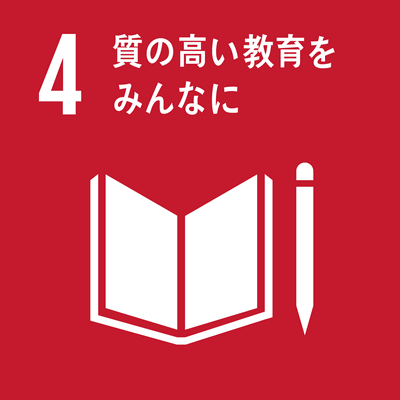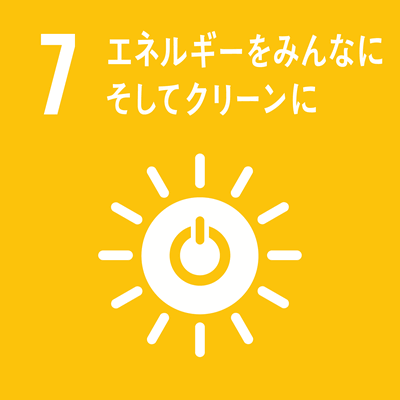シラバス表示
シラバスの詳細な内容を表示します。
→ 閉じる(シラバスの一覧にもどる)
科目の基本情報
| 開講年度 | 2021 年度 | |
|---|---|---|
| 開講区分 | 工学部機械工学科/総合工学科機械工学コース ・専門教育 | |
| 受講対象学生 |
学部(学士課程) : 3年次 |
|
| 選択・必修 | 選択 |
|
| 授業科目名 | 応用量子論 | |
| おうようりょうしろん | ||
| Applied Quantum Mechanics | ||
| 単位数 | 2 単位 | |
| ナンバリングコード | EN-SYST-3
|
|
| 開放科目 | 非開放科目 | |
| 開講学期 |
後期 |
|
| 開講時間 |
木曜日 7, 8時限 |
|
| 授業形態 |
ハイブリッド授業 * 状況により変更される可能性があるので定期的に確認して下さい
「オンライン授業」・・・オンライン会議ツール等を利用して実施する同時双方向型の授業 |
|
| 開講場所 | 工学研究科の教室 または zoomによる遠隔授業 | |
| 担当教員 | 小竹 茂夫(工学部) | |
| KOTAKE, Shigeo | ||
| SDGsの目標 |
|
|
| 連絡事項 | * 状況により変更される可能性があるので定期的に確認して下さい |
|
学修の目的と方法
| 授業の概要 | 工学において、実際の材料がもつ様々な性質や量子力学的な考え方を理解することは、大変重要である。物の性質(物性)がどのように決まっているのか、材料によってどのように違うか,量子情報は従来の情報理論とはどう違うか,を理解することは、機械エンジニアが適切な設計を行う上でも、機械の性能を理解するうえでも必須の知識となる。 本講義では、前期の「応用電子論」に引き続き,様々な物の性質を取り上げ、量子力学を背景とした物性論の講義を通して、それらの概要を講義する。 さらに量子力学を応用した情報理論(量子情報)の基礎的な考え方を紹介し,量子コンピューターの人工知能や現在制御理論への応用についても講義する.基本的には式を追うだけの授業はせず、基本的な性質がどのような仕組みから発現するかの定性的な説明に心がけたい。 In engineering, it is very important to understand the various properties and quantum mechanics of real materials. To understand how the properties (physical properties) of an object are determined, how it differs depending on the material, and how quantum information differs from conventional information theory, a mechanical engineer performs an appropriate design. It is essential knowledge for understanding machine performance. In this lecture, following on from the previous term "Applied Electron Theory", we will take up the properties of various things and give an overview of them through lectures on physical properties with quantum mechanics as a background. In addition, the basic concept of information theory (quantum information) applying quantum mechanics will be introduced, and the application of quantum computers to artificial intelligence and current control theory will be lectured. Basically, I don't want to teach only the ceremony, but try to give a qualitative explanation of how the basic properties emerge. |
|---|---|
| 学修の目的 | 物性論,量子力学、電子論,量子情報,電磁気学,統計力学,材料強度,機器分析,人工知能の理解が深まり、固体物理学や制御理論を学ぶ基礎的能力が身に付く。 Students will deepen their understanding of condensed matter theory, quantum mechanics, electron theory, quantum information, electromagnetics, statistical mechanics, material strength, instrumental analysis, artificial intelligence, and acquire the basic ability to study solid state physics and control theory. |
| 学修の到達目標 | ・半導体デバイスのメカニズムが分かる. ・レーザーやLED・量子井戸の構造が理解できる。 ・固体の誘電体的性質が理解できる。 ・固体の磁気的性質や磁性体種類が理解できる。 ・超伝導の原理や性質が理解できる。 ・結晶の不完全性を生む格子欠陥、転位を理解できる。 ・材料の力学物性の学問の現状を理解できる. ・材料の分析機器のメカニズムが理解できる. ・量子情報の基礎的な考え方が理解できる。 ・量子コンピューターの仕組みが理解できる. ・量子アルゴリズムの考え方が理解できる。 ・量子情報を応用した制御理論や人工知能の可能性を理解できる。 ・ Understand the mechanism of semiconductor devices. ・ Understand the structure of lasers, LEDs, and quantum wells. ・ Understand solid dielectric properties. ・ Understand the magnetic properties and types of magnetic materials of solids. ・ Understand the principles and properties of superconductivity. ・ Understand lattice defects and dislocations that cause crystal imperfections. ・ Understand the current state of study of the mechanical properties of materials. ・ Understand the mechanism of material analysis equipment. ・ Understand the basic concept of quantum information. ・ Understand how quantum computers work. ・ Understand the concept of quantum algorithms. ・ Understand the potential of control theory and artificial intelligence using quantum information. |
| ディプロマ・ポリシー |
|
| 成績評価方法と基準 | レポート:p点(15点)、Moodle小テスト:q点(5点),ノート提出:r点(15点),期末試験:s点(100点),出席:t点(5点)とした時の,((p+q+r)*s/100+t)を100点に換算したものを総合的に評価する。60点以上を合格とする。 Report: p points (15 points), Moodle quiz: q points (5 points), note submission: r points (15 points), final exam: s points (100 points), attendance: t points (5 points) The time, ((p + q + r) * s / 100 + t) converted to 100 points is comprehensively evaluated. Pass 60 points or more. |
| 授業の方法 | 講義 |
| 授業の特徴 |
Moodleを活用する授業 キャリア教育の要素を加えた授業 |
| 授業改善の工夫 | ・毎回,授業前にレジュメを配り,その日の授業のまとめや課題を示す.休んだ学生の便宜をはかるために,レジュメをMoodleで提供する. ・授業の板書を書画カメラを用いることで記録し,Moodleで学生に提供する.これにより受講生の復習をしやすくする. ・授業後にMoodleで小テストを行い,理解の定着を図る. ・質問や連絡をMoodleでおこない,受講生全体に行き渡るようにする. ・ Every time, a resume will be given out before class, and a summary of the class and tasks for that day will be shown. Resumes are provided in Moodle for the convenience of students who are absent. ・ The class board is recorded by using a document camera and provided to students by Moodle. This makes it easier for students to review. ・ After the class, a quiz will be conducted with Moodle to establish understanding. ・ Make questions and communication with Moodle so that they can reach all students. |
| 教科書 | 図書館のe-book libraryにあります 「電子物性 新版」 松澤, 剛雄/高橋, 清/斉藤, 幸喜(著) 森北出版 ISBN 9784627772021 を使用します.図書館のHPの丸善e-book libraryから各自ダウンロードください. 後期の「応用量子論」でも,同じ教科書を使います. |
| 参考書 | 数多くの固体物理関連の教科書があるが、入門書としては 「初歩から学ぶ 固体物理学」 (矢口裕之著 講談社)や 「固体物性入門 例題・演習と詳しい解答で理解する」(沼居貴陽著、森北出版)や 「材料科学3」(C.R.バレット他著、培風館、絶版?)がよい。 また高度だが良い参考書として, 「固体物理学入門(上)および(下)」(キッテル著、丸善) 「熱物理学」キッテル著,丸善がある. この他にも, したしむ固体構造論 (したしむ物理工学) 志村史夫著 朝倉書店 (Maruzen eBook Library) したしむ電子物性 (したしむ物理工学) 志村史夫著 朝倉書店 (Maruzen eBook Library) したしむ表面物理 (したしむ物理工学) 志村史夫著 朝倉書店 (Maruzen eBook Library) したしむ磁性 (したしむ物理工学) 小林久理眞 著 朝倉書店 (Maruzen eBook Library) 多体問題 ―電子ガス模型からのアプローチ―(朝倉物理学大系 9)高田康民著 朝倉書店 (Maruzen eBook Library) 多体問題特論 ―第一原理からの多電子問題―(朝倉物理学大系 15) 高田康民著 朝倉書店 (Maruzen eBook Library) 納得しながら電子物性 (納得しながら学べる物理シリーズ 4)(※) 岸野正剛著 朝倉書店 (Maruzen eBook Library) を挙げる. |
| オフィスアワー | 毎週月曜日12:20~14:30に機械棟2階小竹教員室にて対応する.電子メールによる質問を歓迎する. Every Monday from 12:20 to 14:30, I will respond in the Kotake teacher's room on the second floor of the machine building. I welcome e-mail questions. |
| 受講要件 | |
| 予め履修が望ましい科目 | この授業は「応用電子論」の続きの授業である。 This lesson is a continuation of "Applied Electron Theory". |
| 発展科目 | 大学院では「固体物理特論」,「固体物理演習」,「極限物性特論」,「極限物性演習」,「量子応用特論」としてさらに詳しく学ぶ。 At graduate school, students will learn more in detail as "Solid State Physics", "Seminar in Solid State Physicss", "Physics of Extreme Materials", "Applied Quantum Mechanics", and "Solid State Physics under Extreme Environment". |
| その他 |
・講義の連絡はMoodleを通じて連絡しますので,登録を御願いします。 ・レジュメは,Moodel内にpdfの形で置いてあります。なくした人は取って行ってください。 ・Lectures will be communicated through Moodle, so please register. ・ The resume is in pdf format in Moodel. If you lose, please take it away. |
授業計画
| MoodleのコースURL |
https://moodle.mie-u.ac.jp/moodle35/course/view.php?id=256 |
|---|
| キーワード | ダイオード,トランジスター,レーザー,半導体の光学的性質,誘電体,磁性体, ボーズアインシュタイン凝集,超流動と超伝導,トンネル効果,全反射,無線電力転送, 材料の力学物性,分析機器,量子アルゴリズムと量子コンピューター,人工知能 |
|---|---|
| Key Word(s) | diodes, transistors, lasers, semiconductor optical properties, dielectrics, magnetics, Bose-Einstein aggregation, superfluidity and superconductivity, tunnel effect, total reflection, wireless power transfer, mechanical properties of materials, analytical instruments, quantum algorithms and computers, artificial intelligence |
| 学修内容 | 第1回講義 「ダイオード」と「トランジスター」 ダイオード p-n 接合⇒ダイオード ダイオードの電気的特性 ダイオードの等価回路 整流回路と直流電源 太陽電池 バイポーラートランジスター バイポーラートランジスターの構造 ベース,エミッタ―,コレクター n-p-n トランジスター,p-n-p トランジスター バイポーラートランジスターの静特性曲線 バイポーラートランジスターの動作領域と飽和領域 増幅回路 電界効果トランジスター LSI 製造技術 Lecture 1: "diode" and "transistor" diode p-n junction ⇒ diode Electrical characteristics of diode Diode equivalent circuit Rectifier circuit and DC power supply Solar cell Bipolar transistor Bipolar transistor structure Base, emitter, collector n-p-n transistor, p-n-p transistor Static characteristic curve of bipolar transistor Operating and saturation regions of bipolar transistors Amplifier circuit Field effect transistor LSI manufacturing technology 第2回講義 半導体の光学的性質,レーザー フォトン(光子)とフォノン(音子)のエネルギーと運動量 電子遷移の選択律 半導体のバンド構造における電子状態の遷移と光の相互作用 直接遷移型半導体 間接遷移型半導体 2準位間の電子状態の変化による光の放出と吸収 アインシュタインの自然放射遷移確率 アインシュタインの誘導吸収遷移確率 アインシュタインの誘導放射遷移確率 誘導放出=レーザーの原理(その1) 反転分布=レーザーの原理(その2) 通常光とは? レーザーの特徴 半導体レーザー Lecture 2: Optical properties of semiconductors, laser Energy and momentum of photons (photons) and phonons (phonons) Electronic transition selection Electronic state transitions and light interactions in semiconductor band structures. Direct transition semiconductor Indirect transition semiconductor Emission and absorption of light due to changes in electronic state between two levels Einstein's spontaneous emission transition probability Einstein's induced absorption transition probability Einstein stimulated radiation transition probability Stimulated emission = Laser principle (Part 1) Inversion distribution = Laser principle (Part 2) What is normal light? Laser features Semiconductor laser 第3回講義 誘電体 誘電体に見られる特殊な物性 MKSA 単位系における電磁場の単位 コンデンサーのマクロな物性 物質内部の様々な誘電分極 反分極因子 ローレンツの局所電場 強誘電体 圧電体の用途 焦電体の用途 Lecture 3: Dielectric Special physical properties found in dielectrics Unit of electromagnetic field in MKSA unit system Macro properties of condenser Various dielectric polarizations inside materials Anti-polarization factor Lorentz local electric field Ferroelectric Applications of piezoelectric body Pyroelectric applications 第4回講義 磁性体 磁性体のマクロな物性 物質内部の様々な磁気モーメント 磁性体の分類 強磁性体 強磁性体の磁化(M)の温度による変化 磁区と磁壁 強磁性体の磁化曲線 反磁界係数 結晶磁気異方性 軟磁性体 硬磁性体 磁場センサー Lecture 4: Magnetic Materials Macro physical properties of magnetic material Various magnetic moments inside matter Classification of magnetic material Ferromagnetic material Change of magnetization (M) of ferromagnetic material with temperature Domains and domain walls Magnetization curve of ferromagnet Demagnetizing factor Crystal magnetic anisotropy Soft magnetic material Hard magnetic material Magnetic field sensor 第5回講義 「ボーズアインシュタイン凝集」と「超流動と超伝導」 冬の窓に付く水滴=水蒸気の凝集 2つの量子粒子と古典粒子 ボーズ粒子の分布関数 4He 原子の運動量とエネルギー 4He 原子のおけるボーズアインシュタイン凝集 超流動 クーパー対のボーズアインシュタイン凝集 超伝導 第1 種超伝導と第2 種超伝導 マイスナー効果 ジョセフソン効果 超伝導量子干渉素子 SQUID Lecture 5: "Bose-Einstein Coagulation" and "Superfluidity and Superconductivity" Water droplets on winter windows = water vapor condensation Two quantum particles and classical particles Bose particle distribution function 4He atomic momentum and energy Bose-Einstein aggregation in 4He atoms Superfluid Bose-Einstein agglomeration of Cooper pairs Superconductivity Type 1 superconductivity and type 2 superconductivity Meissner effect Josephson effect Superconducting quantum interference device SQUID 第6回講義 「トンネル効果」と「全反射」,「無線電力転送」 トンネル現象 全反射 無線電力転送 STM Lecture 6: "Tunnel effect", "Total reflection", "Wireless power transfer" Tunnel phenomenon Total reflection Wireless power transfer STM 第7回講義 材料の力学物性 破壊力学 転位論 弾性 塑性 擬弾性 応力誘起マルテンサイト 形状記憶合金 Lecture 7: Mechanical properties of materials Fracture mechanics Dislocation theory Elasticity Plasticity Pseudoelasticity Stress-induced martensite Shape memory alloy 第8回講義 分析機器 X線回折装置 EPMA XPS 示差熱分析 IR spectra Raman spectra NMR MRS SPM Lecture 8: Analysis equipment X-ray diffractometer EPMA XPS Differential thermal analysis IR spectra Raman spectra NMR MRS SPM 第9回講義 「量子アルゴリズムと量子コンピューター」 光は波動でありかつ粒子である=量子 量子の不思議: 量子粒子と古典粒子の違い 量子計算とは何か? 量子アルゴリズムを光学回路で理解する Lecture 9: "Quantum algorithms and quantum computers" Light is a wave and a particle = quantum The wonder of quantum: the difference between quantum particles and classical particles What is quantum computation? Understanding quantum algorithms with optical circuits 第10回講義「量子アルゴリズムと量子コンピューター」の続き Deutche-Josza のアルゴリズム Grover の量子検索アルゴリズム Grover のアルゴリズムの先端技術への応用 人工知能 深層学習 Lecture 10: "Quantum Algorithms and Quantum Computers" Deutche-Josza algorithm Grover's quantum search algorithm Applying Grover's algorithm to advanced technology Artificial intelligence Deep learning 第11回講義「量子アルゴリズムと量子コンピューター」の続き 量子ビットとスピンと偏光 エンタングルメントと量子計算 Lecture 11: "Quantum Algorithms and Quantum Computers" Quantum bits, spin and polarization Entanglement and quantum computation 第12回講義「量子アルゴリズムと量子コンピューター」の続き 量子ビットと量子ゲート 具体的な計算方法 Lecture 12: "Quantum Algorithms and Quantum Computers" Quantum bits and quantum gates Specific calculation methods 第13回講義「量子アルゴリズムと量子コンピューター」の続き 様々な量子アルゴリズム 量子アルゴリズムの応用 Lecture 13: "Quantum Algorithms and Quantum Computers" Various quantum algorithms Applications of Quantum Algorithms 第14回講義「量子アルゴリズムと量子コンピューター」の続き 量子アルゴリズムの振動学への応用 量子アルゴリズムの制御理論への応用 Lecture 14: "Quantum Algorithms and Quantum Computers" Application of Quantum Algorithms to Oscillation Theory Applications of quantum algorithms to control theory 第15回講義 全体のまとめと復習 レポートの回答 Lecture 15: Summary and Review Report Answer 第16回 定期試験 Regular Exam |
| 事前・事後学修の内容 | 事前学修:特に必要はありません. 事後学修:Moodleの小テストに回答ください. Moodleに掲げた板書ノートを参考に,各自の授業ノートを完成ください. レジュメの最後に記されているレポート課題を解いてください. Pre-learning: No special requirements. Subsequent study: Please answer the quiz of Moodle. Please complete your own class notebook with reference to the notebook on Moodle. Complete the report assignment at the end of the resume. |
| 事前学修の時間:40分/回 事後学修の時間:200分/回 |




